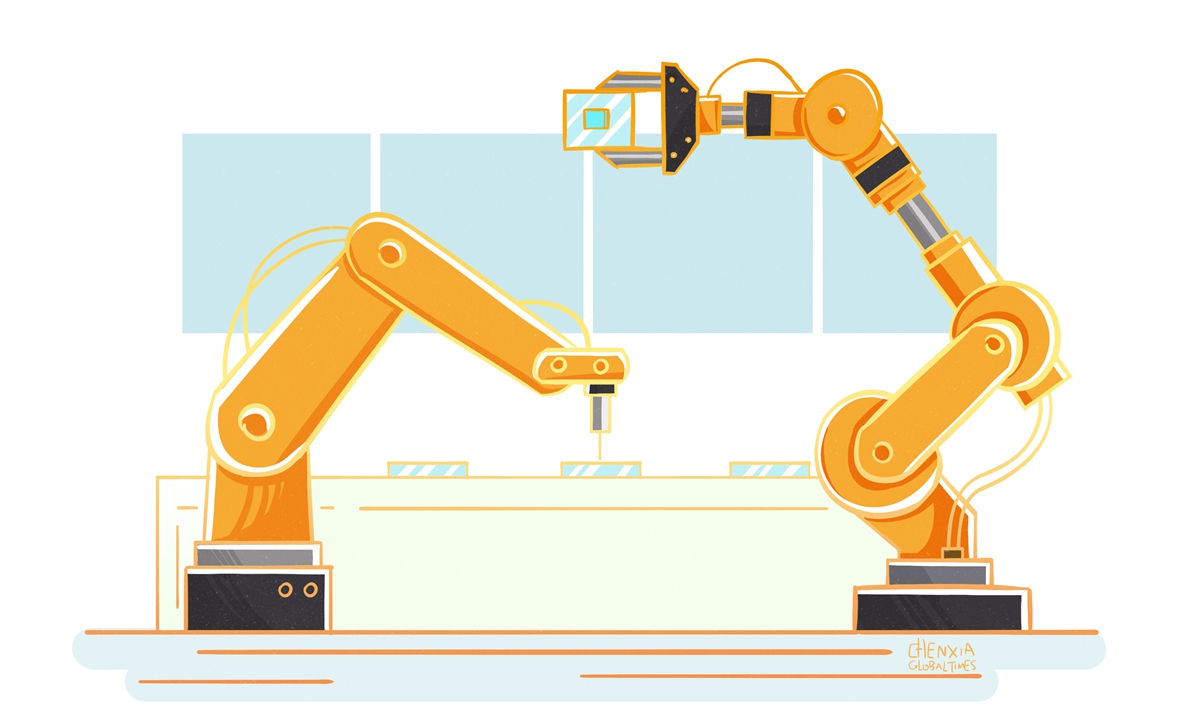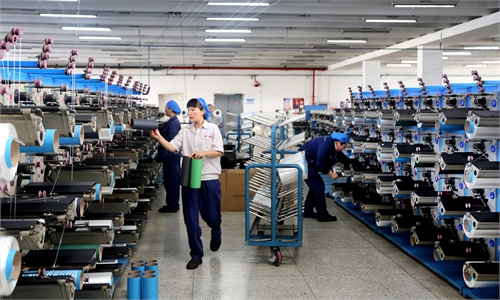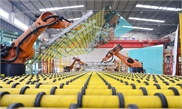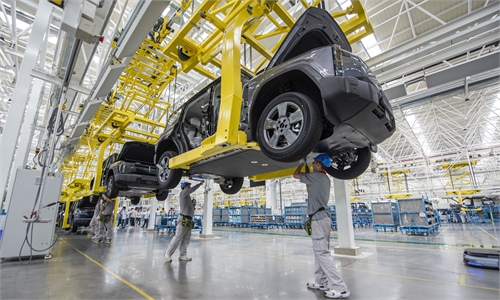
Illustration: Chen Xia/GT
The US views manufacturing as a crucial driver of economic growth and innovation. Over the past decade, the federal government has implemented various plans and strategies aimed at supporting the sector's development. However, one key factor essential to revitalizing the US manufacturing industry - industrial automation - seems to have been overlooked.Robot adoption in factories is an important indicator to track the degree of automation in the global manufacturing industry. According to the World Robotics 2024 report released by the International Federation of Robotics (IFR) on Wednesday, the US ranks 11th globally in industrial robot adoption, with 295 robots per 10,000 employees. Robot density in the country has grown slowly over recent years.
Labor shortages are a significant challenge to Washington's efforts to revitalize the US manufacturing sector. "We hear every day from our member companies - of every size and industry, across nearly every state - that they're facing unprecedented challenges trying to find enough workers to fill open jobs," wrote Stephanie Ferguson Melhorn, Senior Director of Workforce & International Labor Policy at the US Chamber of Commerce, in a report published in October. The report reveals 8 million job openings in the US, but only 6.8 million unemployed workers, underscoring the severity of the labor shortages.
A direct consequence of labor shortages is that labor costs in the US are considerably higher than in developing countries, and they continue to rise. If this issue is not effectively addressed, the US manufacturing sector, especially non-technology-intensive manufacturing industries, will find it difficult to maintain its international competitiveness.
In this context, it is clear that improving industrial automation plays a crucial role in advancing US manufacturing. However, it is unfortunate that progress in this area has been slow in the country. According to data from the IFR, robot density in the US increased from 189 units per 10,000 employees in 2016 to 295 in 2023. In contrast, the global average robot density has more than doubled over the same period.
The growth of industrial automation in the US lags significantly behind the global average. Despite this, it has neither sparked a sense of urgency nor received much attention in a country that constantly emphasizes the revitalization of its manufacturing sector. This is surprising.
It is clear that, during this period, Washington's political elites placed their hopes in protectionism - through measures such as tariffs, non-tariff barriers and subsidies that violate WTO rules - as a way to revive US manufacturing.
However, in the absence of genuine driving forces to support the growth of the US manufacturing sector - such as advances in industrial automation - trade protectionism fails to stimulate economic growth. Worse still, it actually exerts a detrimental effect on the US economy.
For the implementing country, trade protectionism drives up prices of imported goods, blocks high-quality, cost-effective foreign products from entering the domestic market, distorts price signals for goods and services, and results in inefficient resource allocation - all of which hinder the country's economic growth. Above all, the increase in prices of imported goods due to tariffs is likely to be passed on to consumers, contributing to inflation. This has raised concerns among some economists.
In a recent report, Goldman Sachs Research identified risks to the US economy and financial markets, including the potential impact of tariffs and debt. According to their research, tariffs could drive core PCE inflation up to 2.4 percent by the end of 2025, compared to a forecasted 2.1 percent if tariffs are excluded. The analysis also suggests that for every 1 percentage point increase in the effective tariff rate, core PCE inflation could rise by 0.1 percentage points.
Obviously, there are two distinct paths forward. One involves identifying the true drivers of revitalizing the US manufacturing industry through tangible efforts - such as increasing industrial automation, addressing long-standing challenges within the sector, and fostering sustainable economic growth. The other path, however, leans toward trade protectionism, which could pose long-term risks to economic stability. We hope that the US chooses the right course to rejuvenate its manufacturing sector.
The author is a reporter with the Global Times. bizopinion@globaltimes.com.cn



